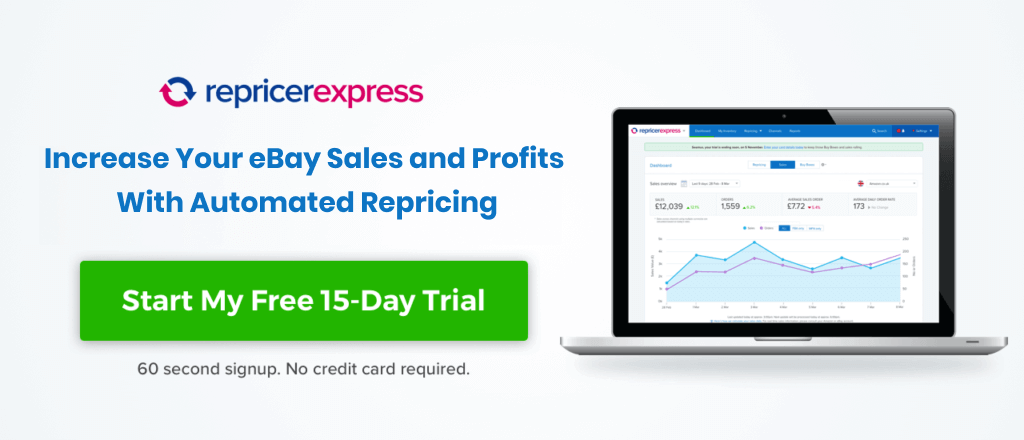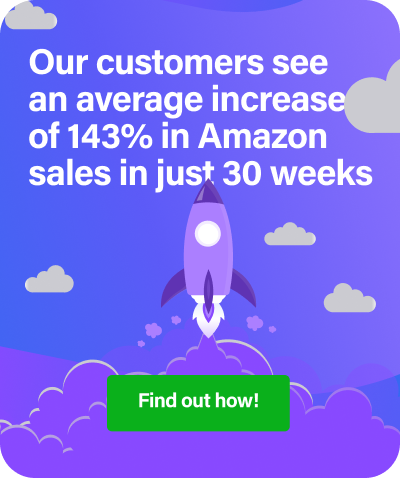If you’re selling on eBay, read this first before trying to hack away at things all on your own. There are plenty of tools out there to help you succeed, and RepricerExpress has rounded up 10 of the best ones.
1. Do Your Homework
If you were aiming to be a pilot, you wouldn’t just get into the cockpit of a plane and figure things out on the fly, would you? Nah, you’d read manuals and take training courses. The same thing exists for eBay sellers, like using Terapeak to find out what the best- and most solid-selling products are. Think of it this way: if you were going to buy from a seller, you’d prefer one that knows what they’re doing. Give yourself a month or so to find out what niche works best for you.
2. Managing Your Inventory
Now that you’ve figured out what you’re going to be selling, the next step is to find an inventory management system that’ll allow you to keep that near-perfect balance of having the correct amount of stock in place. Using Amazon inventory management tools is one of the easiest ways of managing your stock levels and product prices so you don’t have to go at it by hand. That’s what cavemen did; you’re in the 21st century.
3. Smart Listing Reproduction
There are essentially two ways you can go about creating listings: make a fresh one for every product, or create a sort of template for one and use it for similar items. The easier option by far is the second one, as the only things you’ll have to change are the images, image URLs, product descriptions and shipping terms. And really, those only take a couple of minutes each so you can just devote a couple of hours to it and have your entire inventory done.
4. Efficient Listing Scheduling
Once you have all your listings organised, the next step is to schedule them. It doesn’t really matter when you publish them; what’s important is when the bidding time ends. You’ll want to schedule that for when the bulk of your buyers will be online, so do a bit of research into who your consumers are. If you’re selling to a North/South American audience, using Eastern Standard Time makes the most sense because the bulk those continents’ populations live within that time zone.
5. Keeping Track of Images
At the very minimum, each product listing should have one image. But good sellers know that adding multiple images only helps. The trick is, where should you go to host, upload and manage your images? Cross off free hosting sites from your list because of their severe limitations, and bite the bullet on a paid account. You’ll have so many more options, whether it’s with provided space or extended capabilities. You’re a pro, so sell like one.
6. Design Sweet Looking Shipping Labels
Speaking of selling like a pro, reflect that ethos in your shipping labels. You don’t want a delivered item to look like it came from grandma’s house, but rather a professional, established seller. This means skipping practices like cutting out paper rectangles and handwriting the information and using a third party to batch them up in bulk for you. Oh, and use a laser printer (not an ink one) for better results.
7. Get Someone to Fulfil Orders for You
The only exception to this rule is if you’re selling super rare items where you can easily process orders yourself (like a few a day or each week). However, if that’s not the case, then you really need to look into a third-party to fulfil orders for you. Along with saving you massive amounts of time, you’ll also get the benefit of a third party handling things like customer support for you, which will prove essential in the long run.
8. Communicate with Buyers After a Sale
You know how it’s super important for buyers to leave feedback for you after they’ve purchased something so you can build on your reputation? Well, the same thing goes for your buyers. They’ll be much more inclined to buy again from you if you reach out immediately to them, as well as more inclined to avoid negative feedback if they know there’s a real person they can talk to.
9. Sending Regular Emails
MailChimp and aWeber are two of the most popular choices when it comes to email marketing campaigns, which pretty much every successful seller takes advantage of. If you’re not consistently reaching out to your buyers to let them know of cool things happening with your store/brand, then you’re passing up the chance to make another sale. There are some serious profits to be made with sending out regular emails, as buyers have notoriously short memories after completing purchases.
10. Hire an Accountant
Once you get into the flow of ecommerce, you’ll notice that balancing the books becomes more and more of a painful issue. It’s complicated, messy and full of restrictions and loopholes, but there are seasoned professionals out there whose only business it is to do this stuff. Instead of handling it yourself and risk making mistakes, why not just pay someone else to do it? It doesn’t cost a whole lot (compared to the overall money you’re making), so view it as an investment in your business and bring someone on board.
Related: What is the Best Accounting Software for Amazon Sellers?
Final Thoughts
Phew, these are a lot of tools to remember when it comes to selling online! Luckily, RepricerExpress is here to help out by simplifying matters greatly and easing your daily workload. And to make the offer even sweeter, you can get a free 15-day trial today to move up a level in the pro world.



